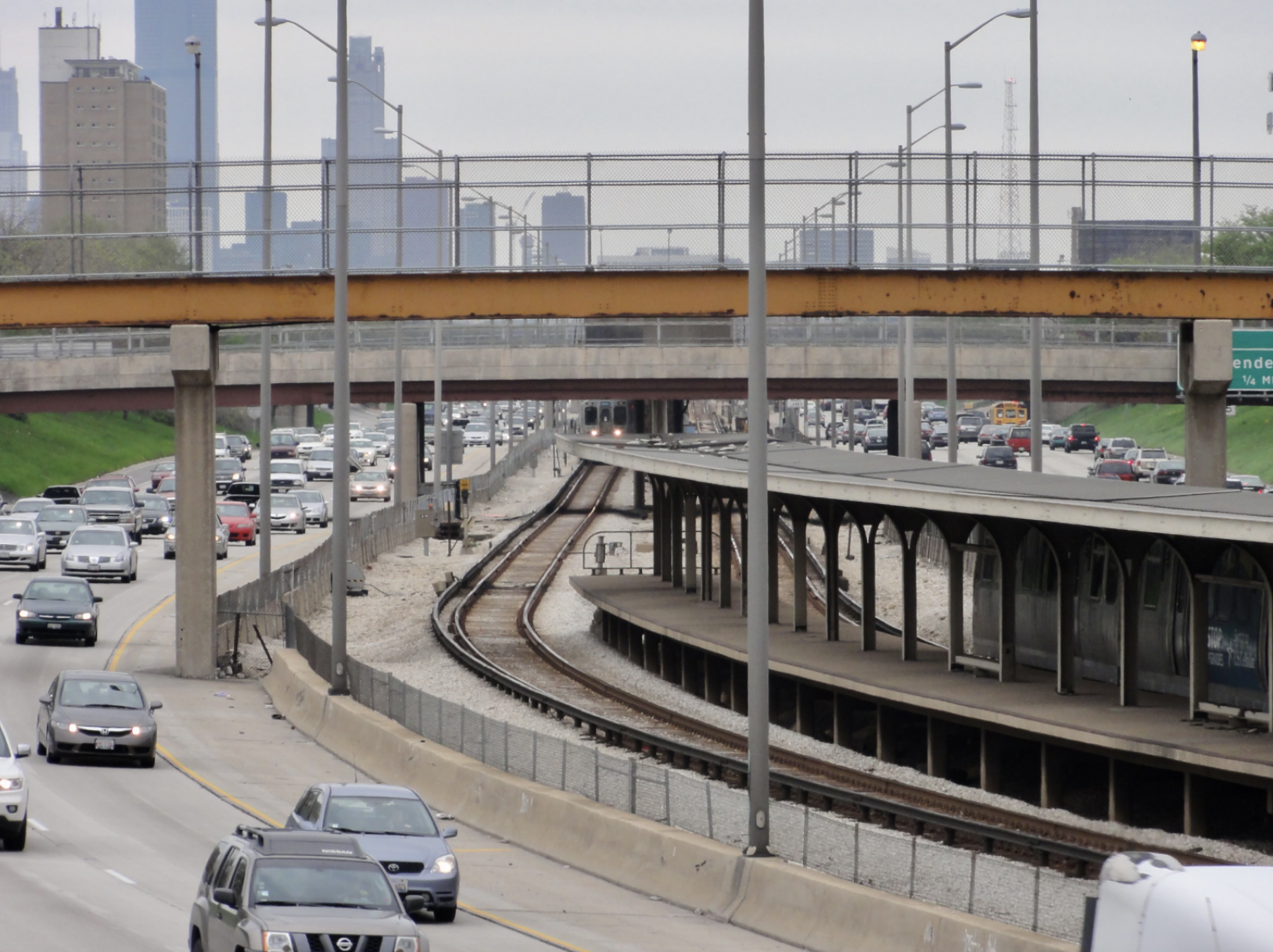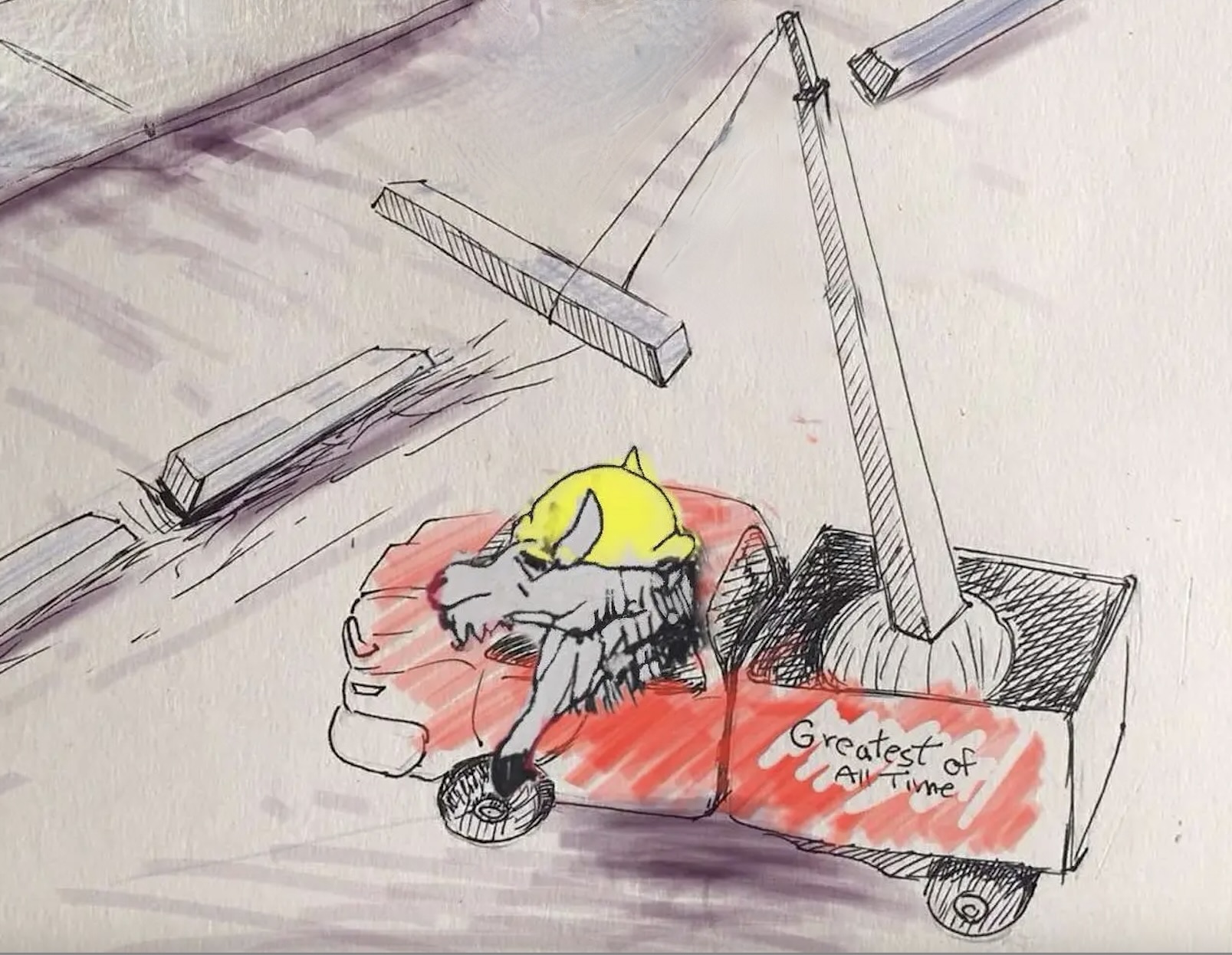Construction Makes Milwaukee Bike Lanes An Obstacle Course
2:00 PM CST on November 22, 2013
Responding to a query today from Streetsblog Chicago about abysmal conditions for cyclists on Milwaukee Avenue, transportation commissioner Gabe Klein says he has asked a deputy commissioner to work with the Department of Water Management "to put a better traffic management plan in place for cyclists ASAP." Deputy commissioner Pat Harney said he is "talking to DWM now."
When they rebuilt the nearly 10 miles of track on the Red Line's Dan Ryan branch the Chicago Transit Authority took the "rip the Band-Aid off" approach to providing rail service to the south side. Instead of keeping slow zones for four years and closing the branch for renovation on weekends, the CTA shut it down for five months. They provided excellent alternate shuttle service, reduced the fare for existing nearby bus routes, and gave free train rides at Garfield Green/Red Line station. The final component was that CTA reached out to hundreds of neighborhood, faith-based, and workforce organizations, and campaigned for a year to let everyone know about the change.
The Department of Water Management should have taken inspiration from the CTA in developing its bike thoroughfare-busting water main project on Milwaukee Avenue from Ogden (where the mayor recently aided an injured cyclist) to Erie in River West, which started the first week of October.
Just a short time ago, in June, the Chicago Department of Transportation dramatically transformed Milwaukee by reconfiguring the street with buffered and protected bike lanes. It wasn't a secret (at least not to Streetsblog readers) that the water main project was on the horizon, but hundreds (maybe thousands) of cyclists got a big surprise.
John Amdor bikes from Logan Square on Milwaukee toward UIC. He told me that unexpected changes to street design are frustrating and confusing to both drivers and cyclists. He added, "Grousing suburban newspaper columnists trolling for pageviews is one thing, but the city is frustrating real residents and business owners when it installs (and then sometimes removes) bikeways without really engaging the community."
Brendan Kevenides of FK Law (a Streetsblog Chicago sponsor) called the current situation on Milwaukee unacceptable, writing, "A temporary bike lane should be created for use during the construction project so that the cyclists, mostly commuters to and from the Loop, can pass safely on this street that they have come to rely upon."
It wasn't a surprise to me, though, that the departments made absolutely no bike provisions, given city departments' and contractors' track record of putting signs in bike lanes, failing to secure sidewalk construction outside downtown, saying the Kinzie bike lane is closed ahead when they really mean that you'll just have to share a travel lane for 200 feet, having one sign say use Clark while another says use Dearborn, or putting hundreds of people in the street at a busy Metra station.
The lack of an alternative route, or comfortable existing route, runs contrary to guidelines on providing for cyclists during road construction. Instead, the Milwaukee bike lane was closed, and drivers were directed to yield to cyclists in a shared lane. By turning this street into a place where bicycling was "intended" to one where it's simply "permitted" the city may very well be reducing its liability to provide a safe place to ride.
Symbolic and legal distinctions aside, the road surface currently consists of slippery metal plates, lumpy pavement, and loose gravel, all of which are hostile to bicycling.
Why I am writing this now, a month after it all began? Because it got worse this week. I rode there yesterday afternoon on my way home from a meeting downtown. Every other time I rode was outside typical rush hours, or in the off-peak direction. Before the lanes that were closed to accommodate construction were both switched to the west side, people riding bikes could ride in the middle of a single, shared lane. Many hugged the curb and drivers would pass them closely, but slowly. If you rode in the middle of the lane – a lawful place to ride – you could feel the heat of the car's engine behind you. This isn't a pleasant feeling.
Then, DWM kicked the obstacle course up a notch: they placed a large sign at the bottom of the hill, in the bike lane, where earlier in the day it was in the painted median (see video*); it's still there today.
What could DWM and CDOT have done? I imagined a couple alternatives:
- Provide a northeast alternative route: make a Jersey-barrier protected detour for bicyclists on Chicago Avenue, to Sangamon or Morgan, to Huron, to Peoria, and Erie back to Milwaukee. This scenario sustains the higher level of comfort that the upgraded bike lanes provided. Motorists can have their rough pavement.
- Create a southwest alternative route: Kinzie Street to Green Street to Hubbard Street to Noble. These are already considered bicycle backroads and have low car volumes, but see low ridership because they don't have the trip efficiency a diagonal route provides.
Again, following CTA's example, there should have been more outreach. At the Active Transportation Alliance awards gala on Tuesday, Mayor Rahm Emanuel called Milwaukee Avenue the most biked street in the United States. Actually, that would probably be Hawthorne Boulevard in Portland, Oregon, or one of the car-free streets on the University of California-Davis campus.
But a letter about the water main project that tore up this key bikeway went out only to neighbors a week or two beforehand. According to the notice, construction should be complete in December, but pavement restoration won't occur until April 2014. And the only notice that the multitude of people who bike this stretch Milwaukee every day, sometimes comprising 20 percent of traffic, got about the upcoming changes to their route was a "construction ahead" sign. The city should have done a better job of getting the word out about the water main work via business networks, Active Trans, and social media so that cyclists could plan alternate routes in advance.
* You'll see in the video that I rode on the sidewalk – I apologize for this but I felt it the only way for me to safely use the street. I didn't see any space in the so-called "shared lane" for me to ride alongside automobiles. I did this to also show what I noticed others doing before me (you can see one of them in the video).
Stay in touch
Sign up for our free newsletter
More from Streetsblog Chicago
Roger that! Streetsblog SF editor Roger Rudick shares his impressions of the Loop’s transportation scene
"Like so many cities, Chicago is obviously a work in progress," he noted.
City announces $2M federal grant to address harms caused by I-290 by improving walk/bike/transit access
The Mayor's Office says the money will fund "improvements for people walking and bicycling on existing streets and paths surrounding and crossing the corridor."
Today’s headlines for Tuesday, April 16
CDOT reveals that it spent nearly $700K to install concrete protection on Doty bike lanes, and then remove it
Some of the former Doty bikeway curb protection was relocated to CDOT projects at Broadway/Aldine and on Wrightwood.




